
Prosci Methodology
A structured, adaptable, repeatable approach to enable individuals to successfully move through changes in your organization.
A framework for managing the people side of change
Organizations must continually change and evolve to succeed. Yet changes such as technology deployments or new processes often fail because leaders and teams put too much focus on the technical aspects of the change. For successful change, organizations must also focus on the people side—and how to ensure that each individual embraces and adopts the change.
Prosci has been conducting in-depth change research for more than 25 years. We’ve studied how individuals experience and respond to change, as well as the strategies of change leaders around the globe.
Based on our best-practices research, we developed the Prosci Methodology for change management. When applied, it supports individuals in transitioning from the current state to the future state, an approach that leads to successful project outcomes.

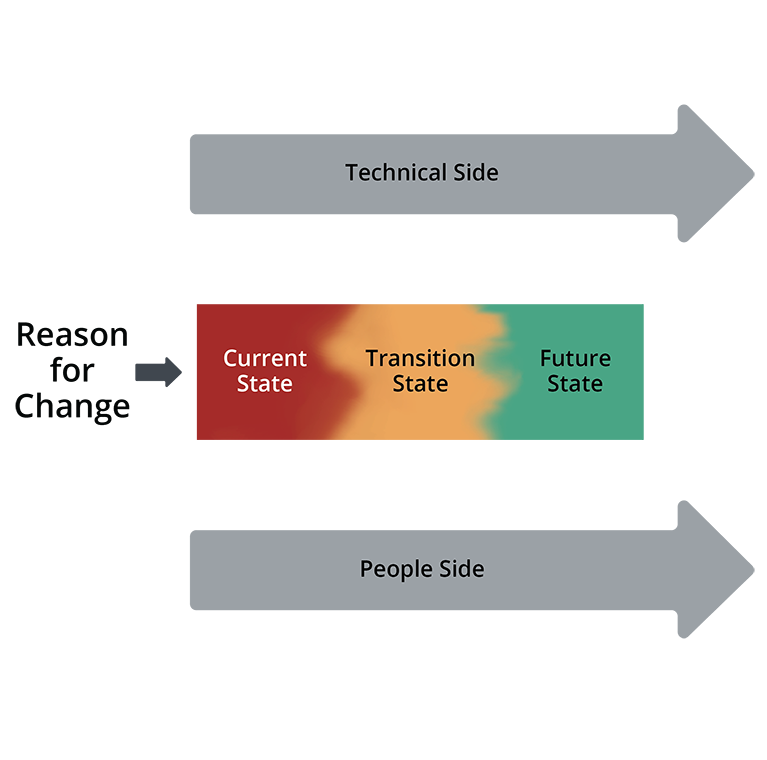
Technical side is executed by the project management discipline
Organizational change requires individuals to move from the current state to the future state—which requires managing both the technical side and people side of the change
People side is executed by the change management discipline
The main components of the Prosci Methodology
The Prosci Methodology is one of the most widely used approaches to change management in the world, and it continues to evolve. In response to practitioner feedback and changing customer needs, and to prepare for future change trends, we refreshed the methodology in 2021. The updated Prosci Methodology is more actionable and accessible, and we believe the enhancement will elevate client success in incredible ways.
Although the Prosci Methodology encompasses a variety of models, tools, assessments, processes and more, today it is comprised of three main components:
- PCT Model – a simple but powerful framework for establishing and connecting the most important aspects of any successful change effort
- ADKAR Model – a highly effective model for guiding individuals through the experiences—or elements—needed to make the change
- Prosci 3-Phase Process – a structured, flexible framework for driving change at the organizational level
Explore our Prosci Methodology
PCT Model
ADKAR Model
Phase 1 – Prepare Approach
Phase 2 – Manage Change
Phase 3 – Sustain Outcomes
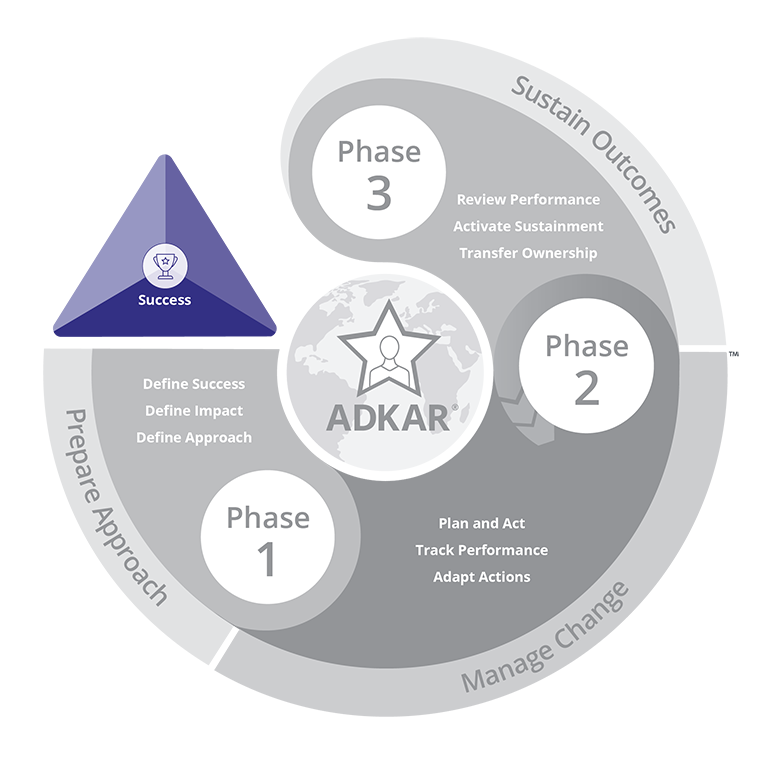
PCT Model
A framework that shows the four critical aspects of any successful change effort and how they are interrelated: a shared definition of success with leadership/sponsorship, project management and change management.
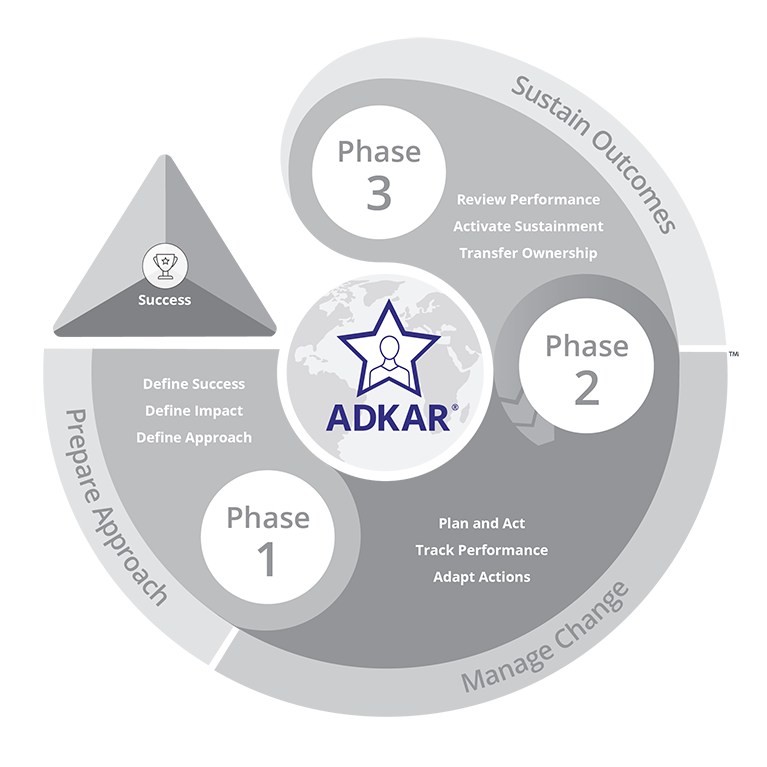
ADKAR Model
Describes the five building blocks or elements an individual needs to achieve for a change to be successful. Impacted individual is at the center of the Prosci Methodology. Individual success leads to organizational success.
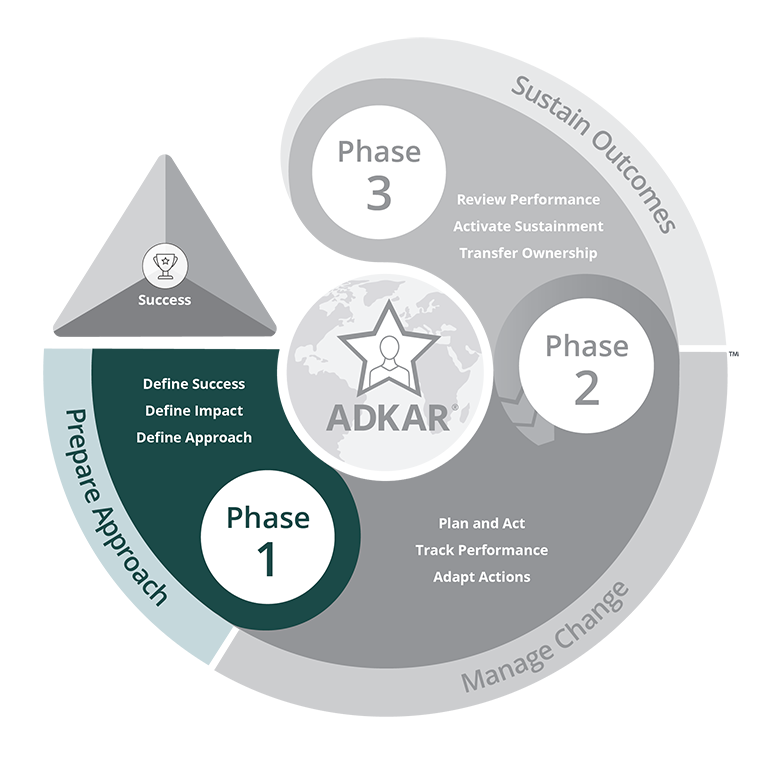
Phase 1 – Prepare Approach
Purpose: To position the change for success by developing a customized and scaled change management strategy with the necessary sponsorship and commitment.
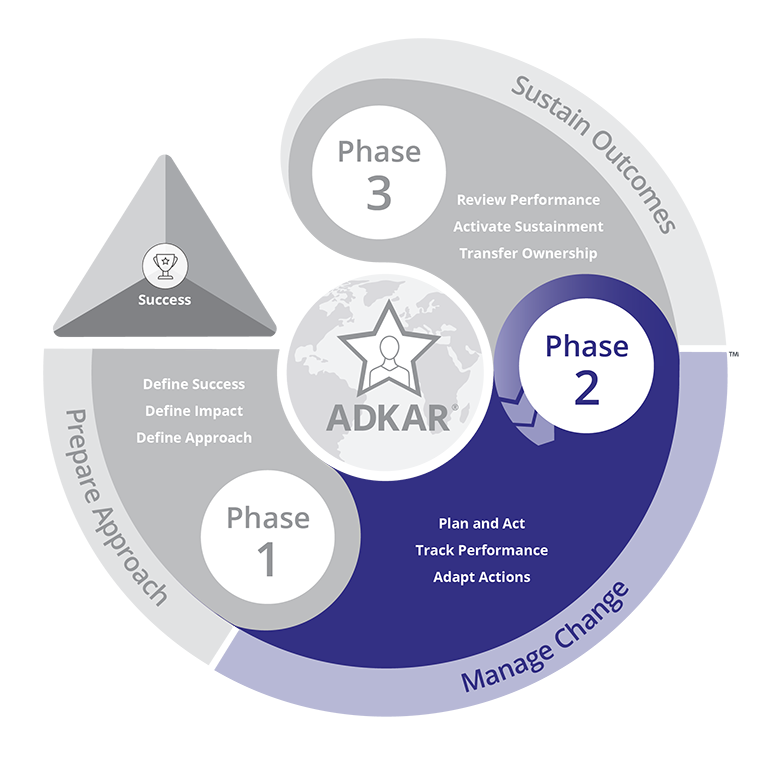
Phase 2 – Manage Change
Purpose: To achieve adoption and usage of the change by creating, implementing and adapting plan(s) that will move individuals and the organization through ADKAR transitions.
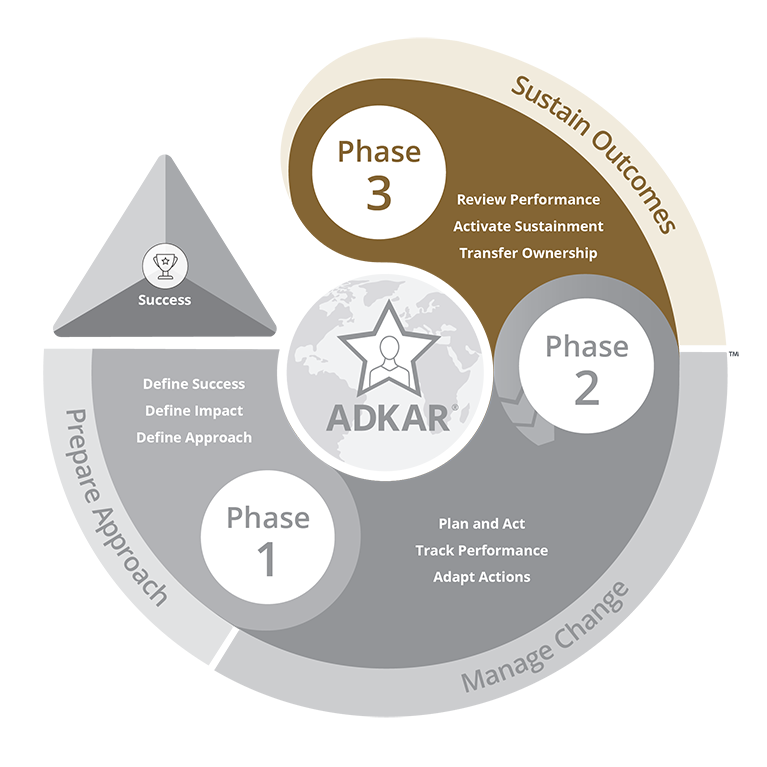
Phase 3 – Sustain Outcomes
Purpose: To realize the value of the change by ensuring the change is adopted and the organization is committed and prepared to sustain the change.

Structured, Scalable and Adaptable
The success of any organizational change depends on the success of change management in encouraging individuals to embrace, adopt and utilize a required change. The change management methodology itself must be structured enough to be repeatable, but also flexible enough to meet the needs of any organization. That’s the Prosci Methodology:
- Structured – The Prosci Methodology takes what we know about people, change and results and organizes it into a simple process that practitioners can apply to develop change management strategies and plans that increase adoption and usage on a particular initiative.
- Scalable and adaptable – You can adapt and flex the Prosci Methodology to achieve success in any type of change, where results and outcomes depend on adoption and usage, and in any type and size of organization.

Prosci’s approach to change management fosters end-user engagement, positioning managers to lead their people through change by engaging the intuitive ADKAR Model. This flexible, scalable methodology has been a game changer.
– April Hershman, Oshkosh Corporation
Applying the Prosci Methodology
The Prosci Methodology enables organizations to manage change wisely. By doing so, it helps employees thrive through the changes they’re faced with and increases the returns on project investments.
You can learn how to apply the Prosci Methodology to change initiatives in your organization and become a Prosci Certified Change Practitioner by attending Prosci’s Change Management Certification Program. It’s an engaging, energizing 3-day learning experience that gives you the knowledge, tools and skills you need to successfully drive change in your organization.
Once certified, you’ll have anytime, anywhere access via the Prosci Portal to the Prosci Hub Solution Suite. It offers extensive digital content, resources and tools that help you apply change management throughout your project. Plus it supports you in learning and growing along the way.

An Introduction to Change Management Guide
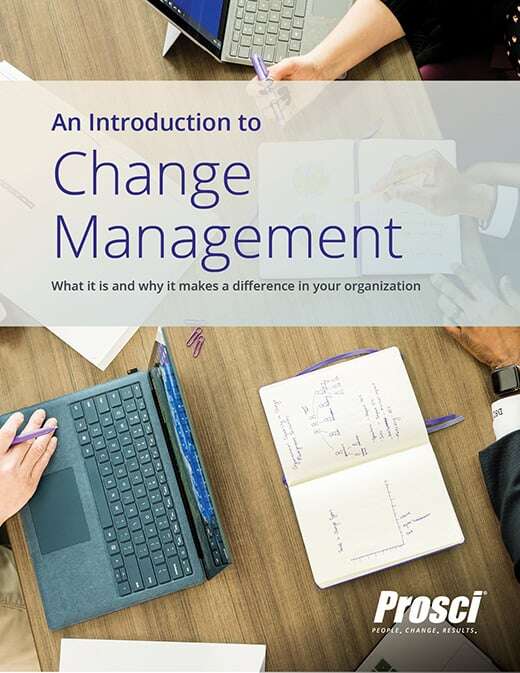
The data is clear: even when organizational changes meet technical requirements and milestones, they can still fail to deliver results and benefits. What’s missing? Change management. Organizations that embrace change management are more likely to achieve project objectives, stay on or ahead of schedule, and stay on or under budget.
